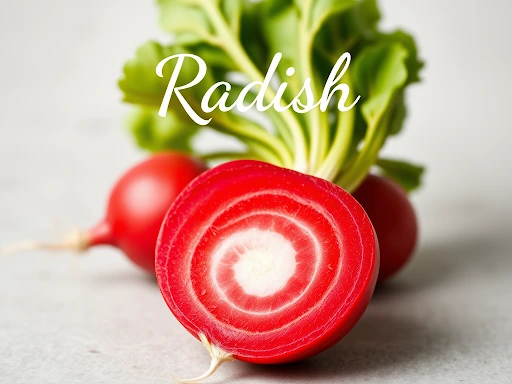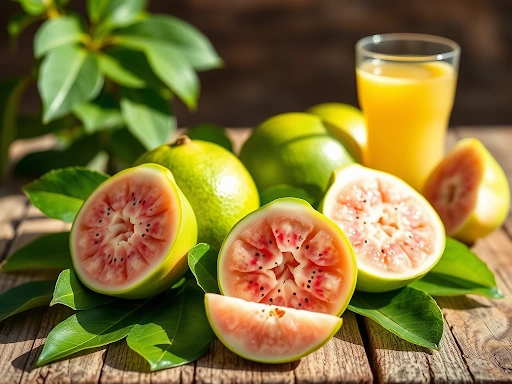Raddishes and Their Plentiful Benefits: From Medicines To Sustainability
Radish is one of the oldest root vegetables, being cultivated and eaten for centuries. In addition to being valued for its crispness and peppery taste, it is revered for its wide-spectrum medicinal benefits, as well as its environmental and artistic contributions beyond the culinary world. This article will analyze radish’s impact in traditional medicine, review its benefits, and explain how it aids in sustainable agriculture, along with some fascinating ways of incorporating it in day-to-day life.
Radish And Its Medicine Related Uses
Radish In Herbal Medicine Practices
Radish has been part of healing practices across the globe. Ancient civilizations such as the Egyptions, Chinese, and Indian cultures knew of it’s medicinal value. Ayurdvedic medicine often suggest using raddishes for different types of digestion issues, and Traditional Chinese Medicine (TCM), recommends its use for clearing excess body heat. Historically, radish juice was used to alleviate symptoms of gallstones, bloating, as well as congestion, serving as an all-encompassing natural remedy for many health problems.
How Radish Aids in Liver Detoxification
Liver detoxification is an important bodily process, and radish can aid in the process. With compounds such as glucosinolates and anthocyanins, radish stimulates liver activity and bile secretion for digestion and waste removal. In addition, the large amounts of water bulks in radish help wash out tehke toxins leading to a healthy liver and kidneys.
Radish’s Role in Preventing and Controling Diabetes and Blood Sugar Levels
Radish is low in calories, has a low glycemic index, and is a vegetable which makes is suitable for diabetics. The fiber contained within raddishes delays the release of sugar into the blood which prevents an abrupt rise in blood glucose levels. Some studies indicate that insulin levels may be improved through the use of radish extracts. Isothiocyanates stimulating action on the pancreas combined with good insulogenic capabilities indicates improved metabolism and blood sugar levels.
Anti-Inflammatory and Antioxidant Properties of Radish
The majority of chronic conditions such as arthritis and other cardiovascular diseases stem from Inflammation and radish is helpful here. Radish aid in the relief of oxidative stress and inflammation by powerful antioxidants; vitamin C and flavonoids aid in this too. Along with the previously mentioned properties, these compounds also lowered the destruction of cells therebyimproving good health.
Implementing Raddishes in Congestion Relief and Respiratory Health
Because of its natural soothing attributes, Raddishes can serve as a treatment for respiratory ailments. The harsh smelling components in radish aid in the breakdown of mucus aiding in the process of expelling it. Moreover, radish juice is a well-known natural treatment for colds, coughs, and sinus problem when sweetened with honey. Additionally, its antifungal and antibacterial features helps in better fights infections and respiratory health as well.
The Ecological Benefits of Radish Farming
Growing Raddishes as a Sustainable And Quick Crop
Perhaps the most important benefit of farming radish is its quick maturity period. Farmers and home gardeners would benefit greatly from the many varieties of radish which reach maturity in a span of 3-4 weeks. As raddishes can grow in a range of soils and climates, they present a sustainable food option without putting a lot of strain on the nature.
Soil Improvement using Radish Farming
Raddishes are commonly referred to as cover crops aimed at aiding the soil’s health, particularly the daikon type. These radish plants improve compacted soil by splitting it and therefore enhances the aeration and drainage. Further, the decomposed remains of radish plants enrich the soil with organic matter and nutrients making It ideal for other crops to flourish.
Water Efficiency and Low Resource Consumption
In comparison to water requiring crops such as wheat and rice, raddishes require significantly less irrigation and tend to have shorter growing periods. Additionally, raddishes thrive in no-till farming systems which reduces soil erosion and water consumption. These characteristics make raddishes an eco-friendly crop for sustainable agriculture.
Radish as a Companion Plant for Pest Control
Certain crops such as cucumber, beans, and lettuce are highly susceptible to certain pests. In order to improve plant yield, raddishes can be planted alongside these crops to help repel pests. Radish scent is strong enough to keep harmful insects at bay which helps reduce the use of chemical pesticides. In some cases, farmers use raddishes as trap crops to lure pests away from crops that require extra protection.
How Radish Contributes to Biodiversity in Farming
Farmers can use crop rotation systems with raddishes in order to foster farm biodiversity. This is possible because of Radish as they attract important insects such as pollinators and predatory pests that help control harmful insects. These beneficial insects help maintain the ecological balance and improve soil fertility while reducing the need of synthetic fertilizers and pesticides.
Unique Radish-Based Recipes to Try at Home
Simple Radish and Herb Salad
This recipe is for a refreshing spring salad that consists of thinly sliced raddishes mixed with freshly cut herbs, olive oil, lemon juice and salt. The peppery and watery content makes this salad a crisp perfect side dish.
Fermented Dishes and Pickles of Raddishes
The pickled raddishes are fermented in vinegar, sugar, and salt brine common in Korean and Japanese cuisines. This offers a crunchy and tasty boost to many meals. Fermented dishes such as kimchi provide probiotic efffects, which are helpful in gut health.
Roasted Radish with Garlic and Organic Spices
Garlic, rosemary, and olive oil powders tossed with semi-fried radish makes it more delicious and healthy for the body. The sharp flavor of raddishes is substituted with a mellow and slightly sweet flavor when roasted, making them very tasty. Fried radish served along with these ingredients is a must try.
For a Relaxing Meal, Blend Raddishes into Creamy Sou
A creamy and exceptionally delicious and mildly spicy blend of soup helps in combating cold. It consists of potatoes, radish, onions, and vegetable broth. Adding a touch of coconut milk or cream increases it’s richness.
Spreads and dips made of Radishes for Chilling
Grated radish mixed with greek yogurt, herbs and lemon becomes a perfect dip for crackers or vegetables. Another widly used option is butter radish, which combines softened butter with mashed radish to use it as a spread.
Knowing radish leaves scientific facts about it’s growth and development
How Radish Seeds Germinate and sprout remarkably fast?
Radish seeds have a very quick germination period of three to five days. For beginner gardeners and those doing class room experiments, they are a wonderful choice because of their quick growth.
How Soil pH and Nutrient Content Impact Radish Growth
Raderal soils ranging from moderately acid to neutral (pH 6.0-7.0) are best for radish growth. Increased nitrogen levels ensure adequate leafy growth, while phosphorus and potassium support root flavor and development.
Root Development and Texture Variation
Influence of Temperature on Radish Spicy Taste and Size
Milder radish varieties are produced in cool growing conditions, while hotter ones can be spicy in flavor. Reasonable growing conditions tend to improve consistency of taste and texture.
Radish Farming Problems and Solutions
Radish cultivars are also susceptible to bolting, poor root formation, and pest infestations. Proper spacing, watering, and crop rotation are key for maintaining a successful harvest.
Fun and Useful Ways to Use Radishes Outside of Food
Natural Fabric and Paper Dye
Dyes in fabric construction often consist of artificial substances. The deep red and pink pigments can be extracted from the radish skins to produce dyes for art papers, fabrics, and other crafting projects.
Decorative Use for Carved Radishes and Festival wreaths radishes
Some cultures like Mexican take pride in carving sculptures from radishes for decorative purposes. This is seen in the Night of the Radishes festival where elaborated figures are made using radishes.
Remedies for skin ailments using Radish
Application of radish rich with vitamin C and antioxidants can reduce blemishes, dark spots, and give the skin a radiant glow.
Cleaning and Deodorizing with Radish Juice
Radish juice acts as a natural disinfectant due to its antibacterial properties. Radish juice can also clean surfaces and cancel out unpleasant smells without using strong chemicals.
Utilization of Radish Extracts in Beauty and Health Care Products
Antimicrobial and moisturizing properties of radish seed oil and extracts has made its way into skincare products.
Recommendation
More than a boring crunchy salad component, a radish is considered a source of nutrition, medicine, and sustainable crop. When left for health, agriculture, cooking, or creativity, radish seems to use its skills. Ranging from promoting a healthier planet to enjoying numerous benefits of radishes make it the perfect crop to be added to our diets and daily routines.
Read also: Raddish: Its Cultural, Economic, and Scientific Significance



